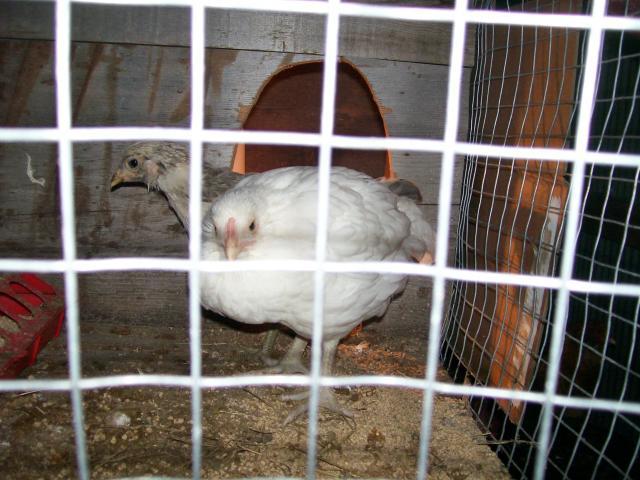Why, Thank you, Sir.
Just the one really handsome one is a total jerk, although, since he has been sneaking into my Cochin and Buckeye pen at night, he hasn't been quite as bad. Now, to breed some good Cornish into him if I decide to keep the bugger around. I know it works the other way better (Cornish roo over the XB hen) but since I don't have any of the good looking crosses in the female type.....
I do have some DCs that don't look too bad so far, not great, but way better than the WLRs I got from McM. Gary is getting some eggs to me next week that will obviously be in improvement over what I have here already. But those won't be laying until mid to late winter or spring.
I booted the one jerk out of the pen 24/7 when he started acting up. My GP Hamburg roo got after him right away, so maybe that settled him down a little

If he Hamburg catches him messing with his big old girls, that boy is going to get a really big lesson! Old Hammie likes that big DP girls. It must be the challenge of getting the job done once he is on top. The funniest darned thing to see!
Just the one really handsome one is a total jerk, although, since he has been sneaking into my Cochin and Buckeye pen at night, he hasn't been quite as bad. Now, to breed some good Cornish into him if I decide to keep the bugger around. I know it works the other way better (Cornish roo over the XB hen) but since I don't have any of the good looking crosses in the female type.....
I do have some DCs that don't look too bad so far, not great, but way better than the WLRs I got from McM. Gary is getting some eggs to me next week that will obviously be in improvement over what I have here already. But those won't be laying until mid to late winter or spring.
I booted the one jerk out of the pen 24/7 when he started acting up. My GP Hamburg roo got after him right away, so maybe that settled him down a little

If he Hamburg catches him messing with his big old girls, that boy is going to get a really big lesson! Old Hammie likes that big DP girls. It must be the challenge of getting the job done once he is on top. The funniest darned thing to see!

















